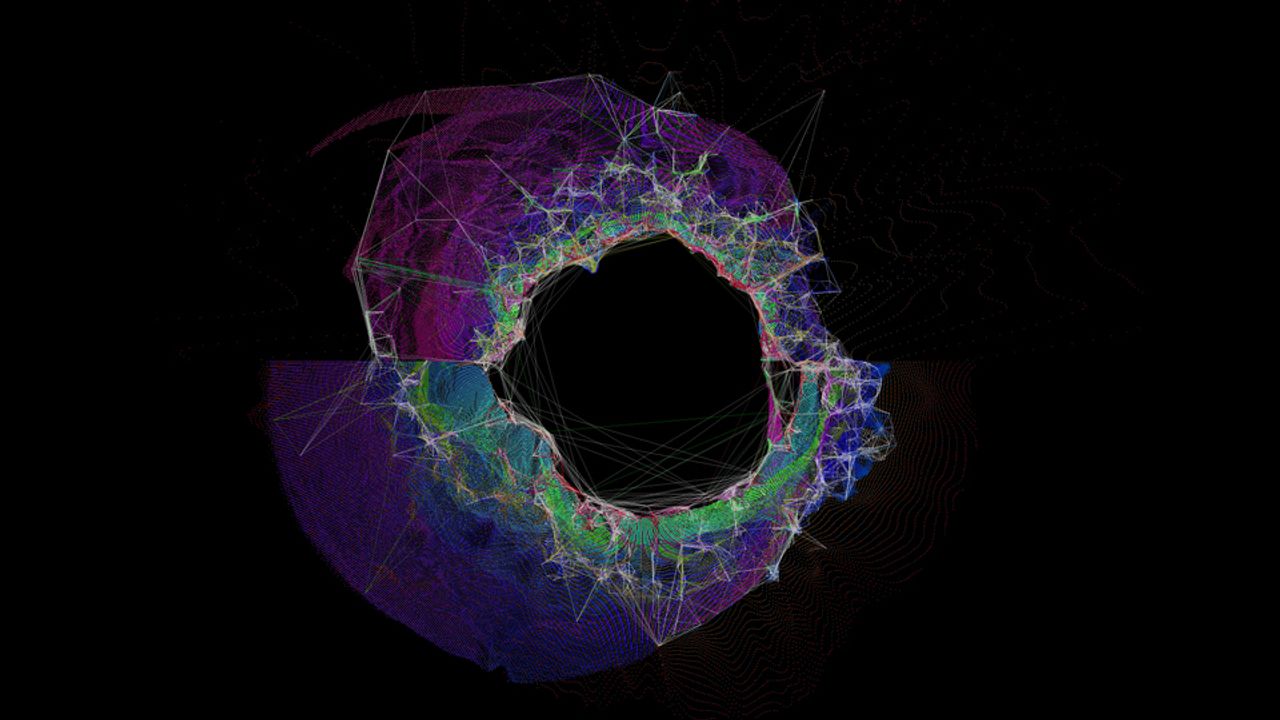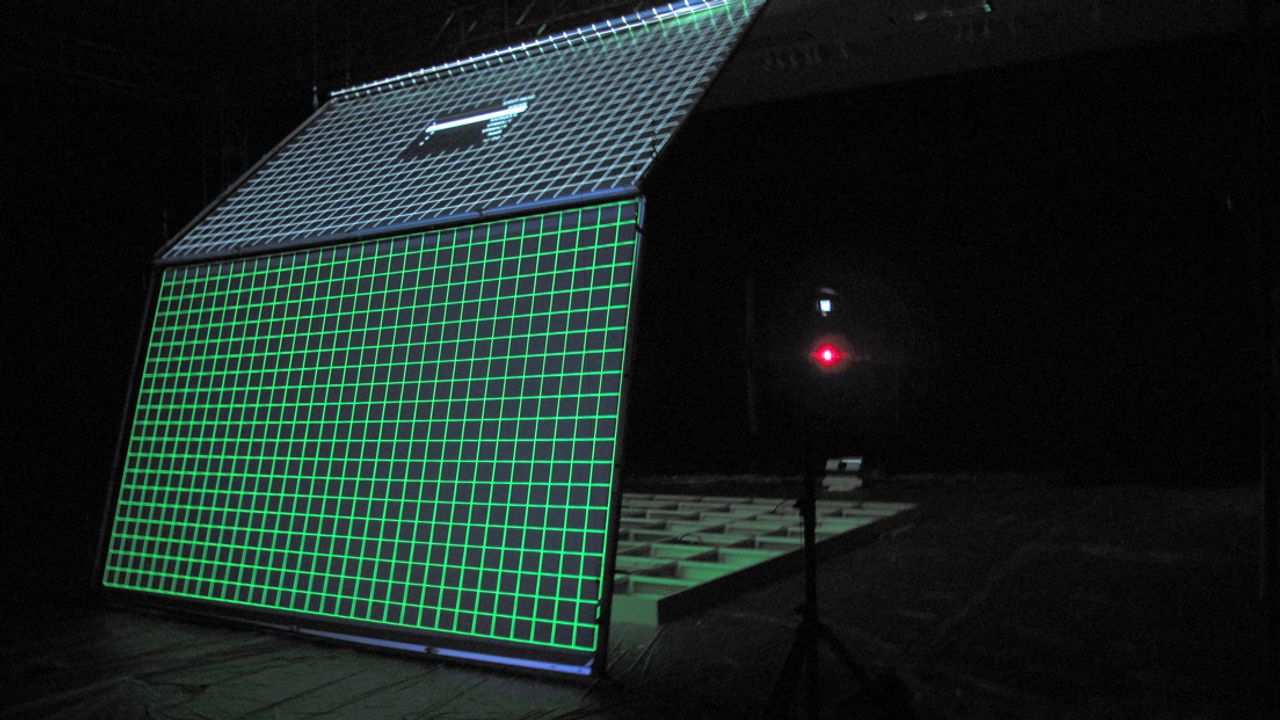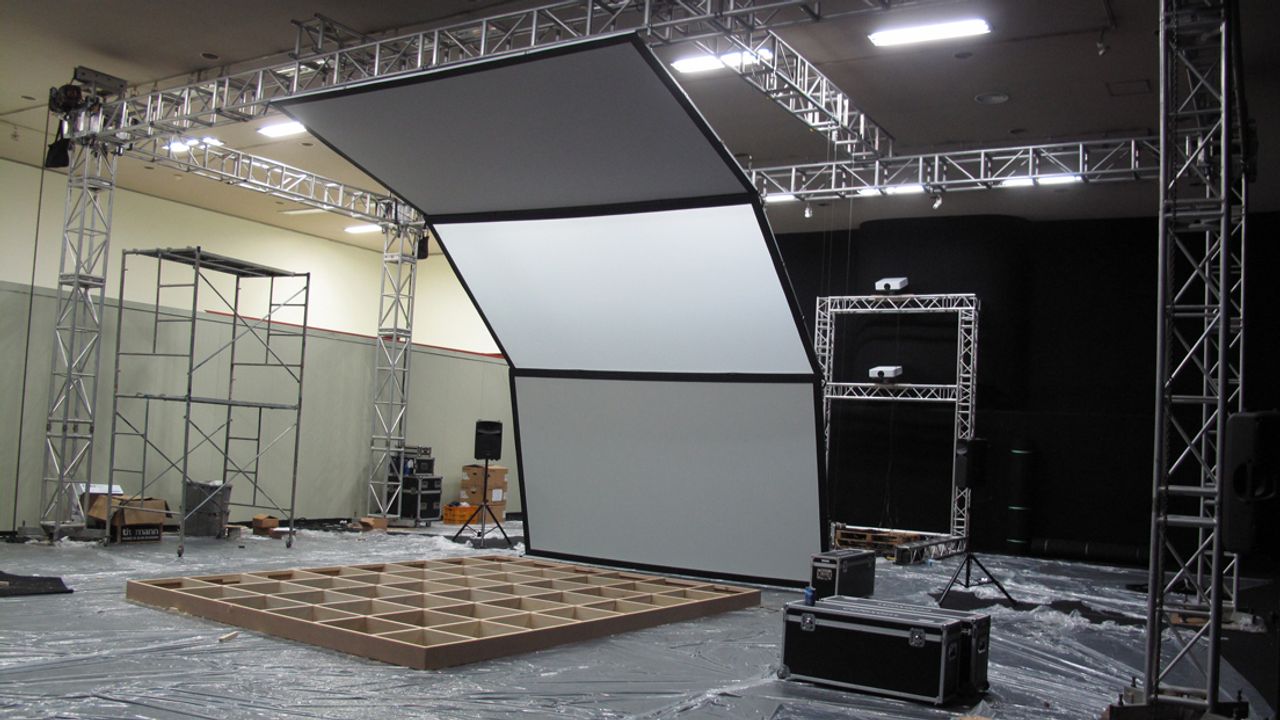Load Video
unfold
2016, visual sound vibration
client work
data visualization
ryoichi kurokawa
cinder
In the project unfold, we had access to two types of astrophysics data: observation data and numerical simulation data. The observation data consisted of various electromagnetic waves captured mainly from the Vela region, including H-Alpha waves from molecular clouds, X-rays from the Vela Pulsar, and far-infrared waves from dust emissions. These data were collected by four space telescopes: Herschel Space Observatory, Planck Space Observatory, Spitzer Space Telescope, and Chandra X-ray Observatory. The observation data was provided in the form of images or FITS files. The numerical simulation data involved simulations of phenomena such as shockwave effects on molecular clouds, galaxy collisions, and supernova explosions. These simulations were implemented as libraries of Fortran code, such as Heracles, Dumses, and COAST, which solve astrophysical fluid flow equations on fixed grids. The simulations were executed on the CEA supercomputer cluster, and the results were stored as sets of HDF5 files or Fortran unformatted binary files. These files contained various parameters, such as particle density, velocity, energy, and radial velocity, represented with 64-bit floating-point accuracy. The data underwent conversion, filtering, and mining processes to generate materials for sound, visual, and vibration components using custom applications. The original data was used as parameters for color, speed, velocity, shape, raw sound/vibration data, frequency control, or as initial/control variables for other algorithms. The artist aimed to create outputs that went beyond traditional scientific visualization and sonorization, offering unique perspectives on the data and phenomena. Throughout the production process, various astrophysics-related software tools were utilized, including Karma, FITS Liberator, SAOImage DS9. As electromagnetic waves are not visible to the human eye across a wide range of wavelengths, there is no 'correct' color to represent the data. Scientists often employ pseudocolor or sound to aid in data comprehension and research presentations. 'unfold' sought to provide visual, sound, and vibration stimuli from different angles, inviting viewers to discover the inherent beauty within the data and phenomena.
Credit
studio Ryoichi Kurokawa, visual & sound material production: Hiroshi Matoba
External Link



